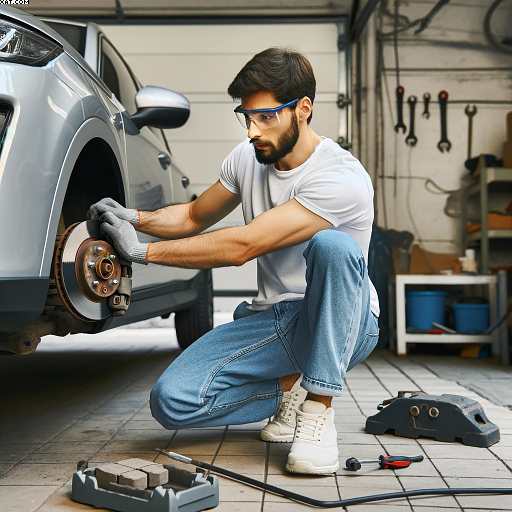CHECK YOUR CAR BRAKES REGULARLY
Table of Contents
CHECK YOUR CAR BRAKES REGULARLY

CHECK YOUR CAR BRAKES REGULARLY
Along with your tyres , your car’s brakes are the most important (and sometimes most neglected) part of your car. I have been guilty of neglecting my brakes. Especially, when I was a young man. When I was a young mechanic, I borrowed a car from my then-boss, Peter.
Peter said that I could, but I must check the car’s brakes. Also. the engine levels before setting off on my journey. I was heading for Blackpool. a seaside resort on the west coast of the UK. On our return home, we started to pass through a town called Preston.
I was doing the statutory speed of 30 mph
and was approaching a pedestrian crossing. Of course, I should have had to stop. But, when I pressed the brake pedal,. Then there was nothing there. Hence, the pedal went straight to the floorboards.
Consequently, I had to swerve the car to miss a guy walking across the crossing. Ending up on the pavement (sidewalk). I rapidly pumped the pedal and managed to get some brakes. Thus, on the pedal. Luckily, the vehicle came to a stop. My friends and I managed to push the car to a garage filling station. Of course, a hundred yards down the road.
CHECK YOUR CAR BRAKES REGULARLY
I lifted the bonnet (hood) only to find that the car brake fluid was at zero level.. in the fluid reservoir. I felt a cold chill down my spine. Because I remembered what my boss Peter had said. Just the day before we set off. We managed to buy some Tesco brake fluid and top up the reservoir.
The car brakes pumped about halfway up. Luckily, the car would stop when I pressed the pedal. So, we limped home back to Yorkshire, UK. Subsequently, it was a rather terrifying experience. Of course, which I vowed would never happen again. Lessons were learned that day. As a result, I am going to spell out a few important things about the care of your brake discs. Hence, for your understanding,. Before you embark on a journey or indeed at any time that you own a car,.
CHECK YOUR CAR BRAKES regularly Your brakes are a life saver
The British MOT test has been a great step forward towards the safety of our cars and our roads. When your car is having it’s annual MOT test, we check everything on that car ( to the VOSA MOT test specifications). One of the problems with old was the checking of your car brake pipes.
Brake pipes connect all four-wheel braking systems and the cylinders and brake pedals and are fixed under the car, exposed to all the elements. A special coating of wax, oil, or occasionally just grease protects them.
Despite all the protection,. The corroded brake pipes would rust and then start to leak the brake fluid, eventually causing the brakes to fail, similar to what happened to me in Preston.
CHECK YOUR CAR BRAKES REGULARLY for corrosion
The MOT test makes sure that all your brake pipes (lines) are in good working order, and if not, the car will fail the test and the pipes will have to be replaced. If you are not sure about the condition of your brake pipes, you can get them checked out at your local independent garage, free of charge, or at the local garage that you use at the moment.
You must always check the brake fluid
in the reservoir under your bonnet, and top it up if required with the correct fluid. Check your brake pedal; it should feel nice and solid. If it goes too far down, then have yours checked by a professional garage or mechanic. Don’t take risks, you should not have to pump your pedal to get a good brake.
Your brake fluid should be changed every so often; this can be done when you have your car serviced, Your local garage will be able to ascertain when, by looking it up on his service
computer for your model of car, we use the Autodata system for checking out the fluid change times.
Check your car’s brakes regularly, including the fluid levels.
Also, you should check your disc brakes and Car Brake Pads. These are the parts that constantly wear out and need replacing with brake pipe kits when they get down to a certain thickness.
When the pads wear down to the the metal part of the pads
then this is when you can hear a loud grinding noise that frightens the driver to death. Once again, if this happens, you should have your car’s brakes checked by a professional mechanic or your local garage.
Once again, if you have your car serviced when you have your annual MOT test then your brakes will be checked and should be fine for the next year. If your brake pedal does not feel right or goes further down than it should before you get a brake, then have the car checked out. Until an expert has examined the vehicle, do not drive.

